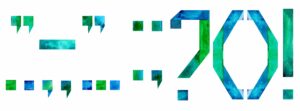When an Ellipsis Is – and Isn’t – an Excuse for the Entire Quote

The ellipsis (consisting of three dots) may be the punctuation mark least used by blog content writers, but it certainly has an important function, showing that words are missing from a text, as Tony Rossiter explains in Effective Business Writing in Easy Steps.
For blog content writers, using an ellipsis can help avoid having the reader’s thought process being distracted from the point you want to make through using a quote. A series of three dots can be placed at the beginning, in the middle, or at the end of a sentence or clause, standing in for sections of text that do not change the overall meaning. You’re quoting someone in order to make or reinforce a point, and you want to use only those words that help you make that point.
Ellipses, literarydevices.net points out, are also common in filmmaking, where the parts and scenes that are of no significance to the plot or character development are simply left out. In fact, this entire ellipsis discussion harks back to my Say It For You teachings about focus in blog posts and “the Power of One”. If your copy tells too many irrelevant stories, you will lose your prospects’ attention and interest. Each post can have a razor-sharp focus on just one story, one idea, one aspect of your business.
Incorporating a quote (from an expert in your field or from a historic figure) can certainly help reinforce that one idea on which you’ve chose to focus that day’s blog post. But you don’t necessarily want to use the entire quote, when the idea can be conveyed by using only a certain part of it, and that’s where the ellipsis punctuation mark can become useful. “To cite means to quote someone, or someone’s work, as a authoritative source to support an argument,” the editors of The Book of Random Oddities explain. But the fact is, people read blogs to get information and we, as content providers need to provide that information with honesty and respect towards the original creators of any materials we use to support the points we want to make.
That’s precisely why what isn’t “cricket”, as Mignon Fogarty of Grammar Girl.com reminds writers, is using ellipses to change the meaning of a quotation. Don’t be lazy, she admonishes, allowing “the sweet lure of ellipses to muddle your ability to write a complete sentence”.
Blog posts that demonstrate a high degree of expertise backed by solid research, plus a very high degree of focus, have a good chance of gaining reader respect. For maintaining focus and brevity while bringing in outside expertise, those three little ellipsis dots can pack a might punch!





Follow us online!